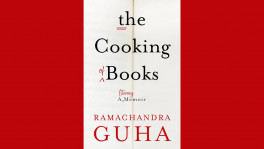The fascinating tale of Halwa
Derived from the Arabic word “halwa”, which means sweet confection, it’s century-old origin is widely debated but evidence suggests that it was originally a somewhat gelatinous, grain-based dessert made with oil, flour and sugar

There are numerous varieties of Halwas made all across the world. From green chili halwa to egg halwa, if there is one dessert that can be made from anything - it is halwa.
But this popular dessert has had quite a journey, which is why it was rechristened as "halava" in Sanskrit, "halawa" in Egypt, "makedonikos halvas' in Greece, "halvah" in Hebrew, "hilwa" or "halwa" in Arabic, "helva" in Turkey and "halva" in India and in Bangladesh we pronounce it as "haluwa".
Derived from the Arabic word "halwa", which means sweet confection, it's century-old origin is widely debated. Nearly every Middle Eastern culture claims it as its own. According to Alan Davidson of The Oxford Companion to Food, halwa is an Arabic dish.
Some scholars have suggested it originated near Byzantium, now Istanbul, sometime before the 12th century, while others believe it dates back all the way to 3,000 BCE.
Ultimately, halwa spread across the Middle East, the Mediterranean, Central Asia and the Subcontinent. In each new locale, its name and ingredients changed slightly.

Evidence suggests that it was originally a somewhat gelatinous, grain-based dessert made with oil, flour and sugar. Egyptians mixed in pistachios, almonds or pine nuts, while people from the Indian subcontinent flavored it with regional products such as ghee, coconuts and dates.
As per findings by food historians, the first known recipe of halwa appeared in the 13th century Arabic text titled "Kitab al-Tabikh", roughly translated as "The Book of Dishes", written by Muḥammad ibn al-Ḥasan Ibn al-Karīm.
The text mentions eight different varieties of halwa and their recipes. A cookbook from Moorish Spain from the same era tells of rolling out a sheet of candy similar to halwa - made from boiled sugar, honey, sesame oil and flour; sprinkled with rosewater, sugar and ground pistachios and covered it with a second layer of candy it is cut into triangles.
One of the sweet's most prominent enthusiasts was Suleiman the Magnificent (1520-1566) - the Ottoman Empire's longest- reigning sultan, who had a special kitchen built next to his palace called "Helvahane" - the House of Halwa - where some 30 varieties of the confection was produced.

One of the varieties, made with sesame tahini, was adopted by Ottoman-ruled Romanians who passed it onto the Ashkenazi Jews in Europe. It was this version that made the transatlantic journey to America in the early 20th century.
Halwa then travelled to India and won the hearts of every sweet lover. As per "Guzishta Lucknow" by Abdul Halim Sharar, a 20th century author and historian, halwa originated in the Arabic lands and came to India via Persia.
In her book "Feasts and Fasts", Colleen Taylor Sen writes that halwa arrived in India during the Delhi Sultanate, during the early 13th to the mid-16th century.
Safi, too, says that "Nimmatnama-i-Nasiruddin-Shahi" or the Book of Delights, a medieval cookbook written for the Sultan of Malwa in 1500, mentions halwa and its recipe. The dish came to India via trade routes is also borne out by the fact that the two important port cities - Karachi and Kozhikode - have their own, distinct versions of halwa even today.
Innovations seem to have been added to this sweet delicacy over the centuries - a testimony to how keenly the locals adopted it and experimented with it.

Halwa is one of the most-loved desserts in Bangladesh. Being a Muslim-majority country, almost all religious festivals have adopted the necessity of halwa and the origin of this sweet treat explains why.
Even if you are a person without a sweet-tooth, these lip-smacking halwa recipes will surely make you want to gorge down handfuls of the festive delicacy this Shab-E-Barat.
Walnut Halwa
Servings: 2
Ingredients:
1 cup walnuts
1/2 cup rock sugar powder
1 tbsp cucumber seeds
1/2 tsp cardamom powder
A pinch of saffron
1 tsp dates, finely chopped
1/4 cup milk
Instructions:
1. Soak the walnuts in hot water for 15 minutes or in room temperature water for two to three hours.
2. Drain the water and dry the walnuts with a cloth. Coarsely grind the nuts with the cucumber seeds.
3. In a pan, roast the ground walnuts for five minutes without ghee. Add the milk, rock sugar powder, cardamom powder and saffron and cook for 10 minutes on medium flame. Keep stirring continuously.
4. Remove from the flame and add in the dates.
5. Garnish it with pumpkin seeds, dates and serve hot.
Oats Halwa
Servings: 4
Ingredients:
1/4 cup ghee
1/2 cup instant oats
1/2 cup milk
1/2 cup sugar
2 tbsp cashew nut
1/2 tsp cardamom powder
Instructions:
1. Dry roast the instant oats for four to five minutes until it starts to smell toasty. Once roasted, blend it into a fine powder.
2. Pour the ghee in a pan and add in the cashews. Fry till golden and set aside.
3. Add in the oats powder and stir for two minutes.
4. Add in the milk and keep stirring until it thickens.
5. Add in the sugar and mix well. Once it has thickened slightly, add in the ghee little by little and mix well.
6. Cook until the halwa does not stick to the sides of the pan anymore.
7. Add the cardamom powder and roasted nuts. Mix well and serve.


 Keep updated, follow The Business Standard's Google news channel
Keep updated, follow The Business Standard's Google news channel
















